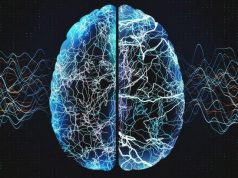
Stereoelectroencephalography has better outcomes than subdural electrode implants in some cases
FRIDAY, March 15, 2019 (HealthDay News) — The robotic stereoelectroencephalography (SEEG) procedure to determine whether patients with pharmacoresistant epilepsy are candidates for brain surgery is safer and more efficient and more often leads to favorable epilepsy outcomes than the traditional subdural electrode (SDE) implantation method among those undergoing resection or ablation, according to a study published online March 4 in JAMA Neurology.
Nitin Tandon, M.D., from University of Texas Health in Houston, and colleagues compared the relative efficacy, procedural morbidity, and epilepsy outcomes related to SEEG (121 cases) and SDE (139 cases) in patients with medically intractable epilepsy. The patients underwent consecutive intracranial electroencephalographic procedures to localize their epilepsy from Nov. 1, 2004, through June 30, 2017.
The researchers found that a much greater proportion of SDE versus SEEG cases were lesional (71.2 versus 43.8 percent; P < 0.001). In the SDE group, there were seven symptomatic hemorrhagic sequelae (one with permanent neurological deficit) and three infections compared with no clinically relevant complications in the SEEG cohort (P for complication rates = 0.003). Compared with SEEG cases, a greater proportion of SDE cases resulted in resection or ablation (74.4 versus 91.4 percent; P < 0.001). Among patients undergoing resection or ablation, at one year, favorable epilepsy outcomes were more common among SEEG cases versus SDE cases (76.0 versus 54.6 percent; P = 0.003). Among nonlesional cases, good outcomes at 12 months were seen in more SEEG cases than SDE cases (69.2 versus 34.6 percent; P = 0.006). When considering all patients undergoing evaluation, favorable outcomes were similar for SEEG and SDE cases at one year (47.1 versus 42.4 percent; P = 0.45).
“The significantly favorable adverse effect profile of SEEG should factor into decision making when patients with pharmacoresistant epilepsy are considered for intracranial evaluations,” the authors write.
One author disclosed financial ties to the Alliance Family of Companies, the largest provider of outpatient clinical neurophysiology testing services in the country.
Abstract/Full Text (subscription or payment may be required)
Copyright © 2019 HealthDay. All rights reserved.







